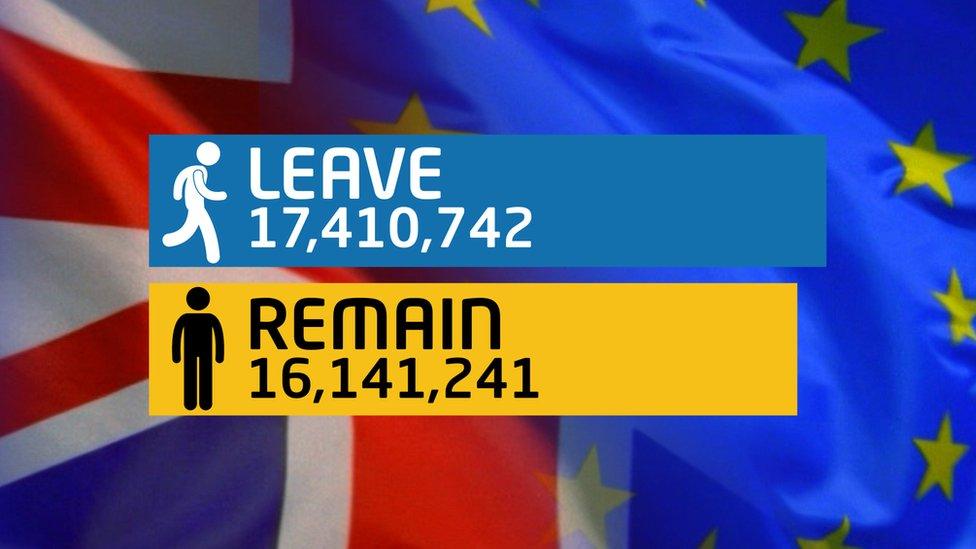Brexit: What is it and where are we up to?
- Published
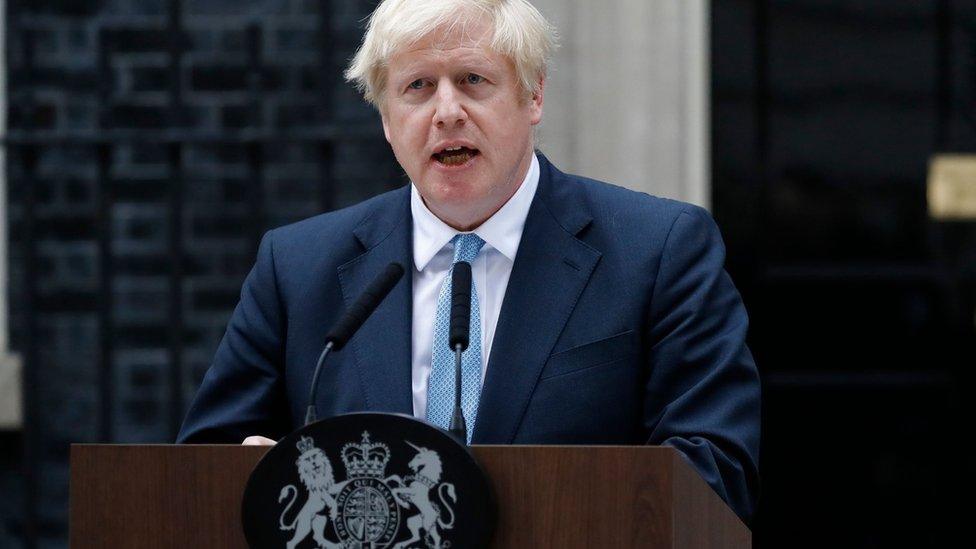
Prime Minister Boris Johnson is working to ensure that the UK leaves a club of countries called the European Union on 31 October 2019
On 23 June 2016, UK adults made a historic decision. They voted for the UK to leave a group of countries called the European Union (EU).
This is called Brexit, made up of the words 'Britain' and 'exit'.
The vote was over three years ago, but it is still a massive issue in UK politics at the moment.
The UK was first due to leave the EU at 11pm on Friday 29 March 2019, but this didn't happen. The UK is still a member of the group and Brexit is now scheduled for the 31 October 2019, although a letter requesting an extension to this date has been requested.
That's because UK and EU politicians are still trying to make the final arrangements for Brexit to happen. Members of Parliament (MPs) have recently shown some support for Boris Johnson's current deal for the arrangements by which the UK will leave the EU, but weren't happy with the amount of time the government was giving them to discuss it.
No country has ever left the EU before, so Brexit is a significant moment in European history.
Read on to find out more about what has happened since the vote in June 2016 and where we're up to now.
Boris Johnson has said he'll push for a general election if the European Union (EU) supports a Brexit delay until January.
The prime minister "paused" his Brexit bill on 22 October after MPs rejected his plan to get it signed off in three days.
MPs voted in favour of Boris Johnson's 110-page Withdrawal Agreement Bill, which lays out important terms around how the UK will leave the EU.
However, MPs voted against the prime minister's plans to get the bill through the House of Commons within a three-day period, putting a pause on Boris Johnson's Brexit deal.
How did the Brexit vote happen?
For many years, UK politicians have argued about whether it is better for the UK to be in or out of the EU.
There are many different arguments both for and against being a part of the group, and lots of people have different opinions about it.
Back in 2013, Conservative MP David Cameron promised that if his party won the next general election, he would let UK voters have their say on whether or not the UK should stay in or leave. In 2015, the Conservative Party won that election.
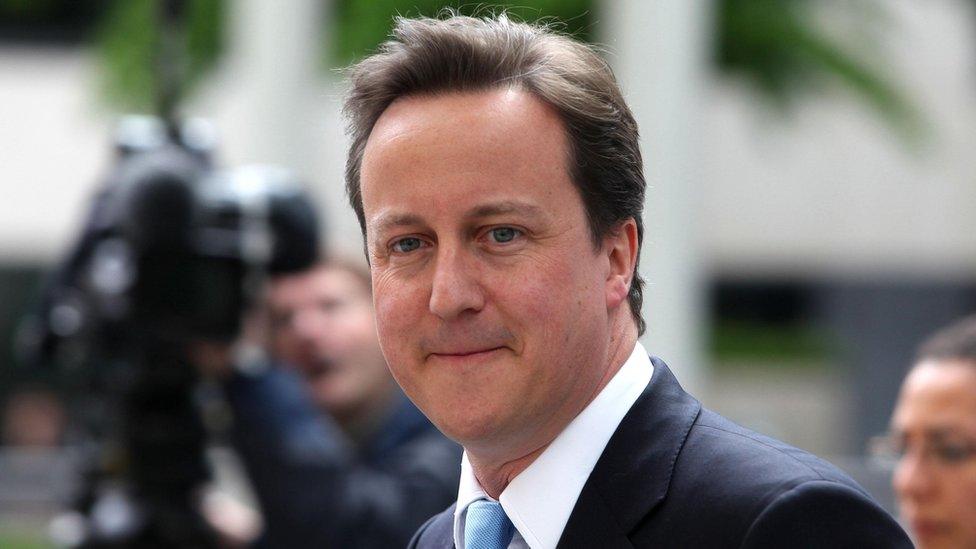
David Cameron was prime minister before Theresa May (who was prime minister before Boris Johnson) - he thought the UK should have stayed within the EU, but he believed that UK voters should have the right to decide
When the Conservative Party won the general election, David Cameron became prime minister and dedicated a lot of his time to renegotiating the UK's relationship with the EU.
Then in February 2016, he set a date for the vote to take place on Thursday 23 June, 2016.
The question is always important in any referendum. The question for voters was: "Should the United Kingdom remain a member of the European Union or leave the European Union?"
The issue divided many people, as politicians and voters across the UK all chose which side they would choose - remain or leave.
David Cameron said: "The choice is in your hands, but my recommendation is clear. I believe that Britain will be safer, stronger and better off by remaining in a reformed European Union."
Why was the Brexit vote important?
The UK has been a member of the EU for more than 40 years, so it's a big deal to leave it.
Not only that, but no country has ever left the EU before, so it was - and still is - completely new territory for everyone involved.
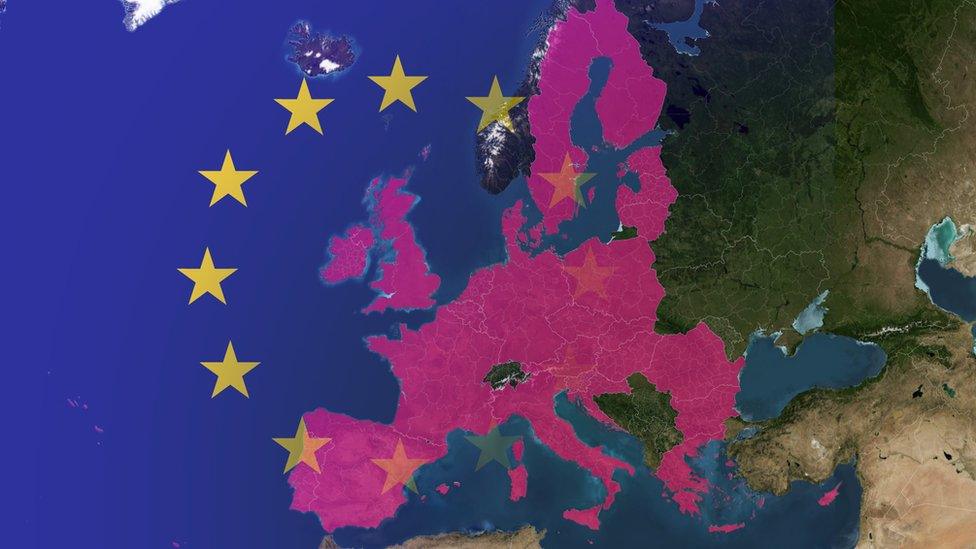
The pink area shows which countries are in the EU
What was the Brexit referendum result?
More than 33 million UK adults voted in the referendum. Around 52% of them - just over half - chose to leave the group of 28 countries, while 48% wanted to stay in it.
It was close, but the result was declared - the UK wanted to leave the EU.
Here you can watch the moment that the final result of the referendum was announced.
What happened after the Brexit vote?
David Cameron: The country requires fresh leadership
Once the result of the vote was announced, David Cameron - who didn't get the result he'd campaigned for - said he was going to resign, and so the UK needed a new prime minister before anything else could happen.
Theresa May took over the job the following month in July 2016.
She spent her time as leader of the UK government trying to sort out what the UK's relationship with the EU would be like when it left.
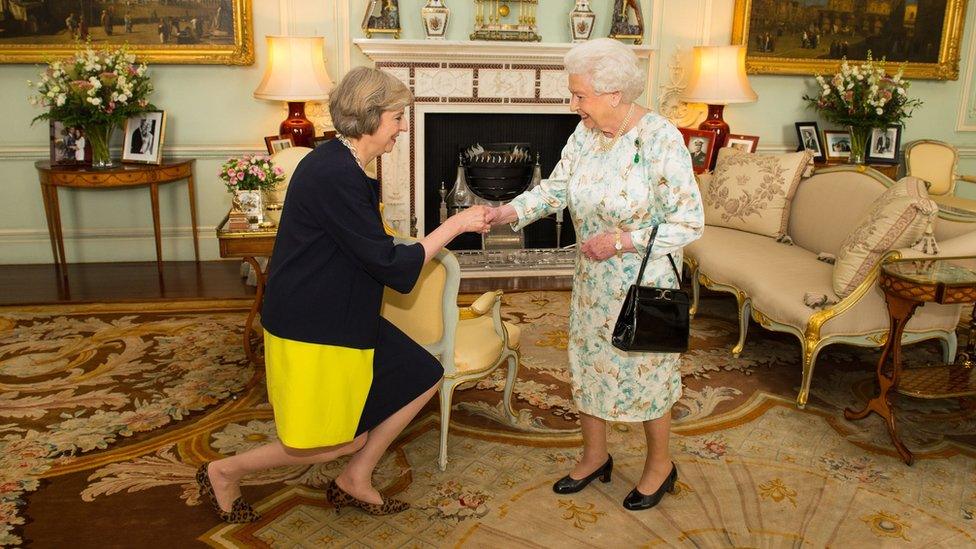
This photo shows the moment when Theresa May met the Queen and was invited by her to become the next prime minister, after David Cameron
Why did the UK not leave the EU when Theresa May was prime minister?
Theresa May was prime minister from 13 July 2016 to 24 July 2019, when Boris Johnson took over.
During this time, there was a lot of backwards and forwards between the UK government and the EU about how Brexit would work.
On 29 March 2017, Mrs May officially started the two-year process for the UK to leave the EU by triggering Article 50 - the name given to an agreement between EU members about how a country can leave the group.
Nobody had ever put Article 50 into practice before - until then - so this was a significant moment in the Brexit story.
WATCH: The moment that the UK was officially on its way out (March 2017)
From when Article 50 was triggered, the UK was left out of making big EU decisions, but still remained a member of the group and had to follow EU rules and agreements.
Mrs May set to work to organise a Brexit deal, which was agreed by EU leaders in November 2018 - four months ahead of the deadline for the UK to leave.
But MPs would not approve her deal and, in the end, it was rejected three times by Parliament.
The March 2019 Brexit deadline was then delayed, as Mrs May struggled to get everyone to agree.
Eventually, unable to get her deal over the finish line, she stepped down as leader of the Conservative Party to make way for somebody else to become prime minister to try to sort out how Brexit would work.
Nov 2018: Theresa May stands by her Brexit deal
Nov 2018: EU approves the deal
Dec 2018: Theresa May wins a vote to keep her job
Jan 2019: 432 MPs vote her deal for the first time
Feb 2019: Will Britain's exit from the EU be delayed until May?
13 March 2019: MPs vote against Theresa May's deal again
28 March 2019: Prime minister says she'll quit if her deal is approved
On 24 May 2019, Theresa May officially announced her resignation as Conservative leader, saying: "It will always remain a matter of deep regret for me that I have not been able to deliver Brexit. It is now clear to me that it is in the best interest of the UK for a new (prime minister) to lead that effort," she said.
WATCH: The moment that Mrs May announced that she would step down (May 2019)
After a Conservative Party leadership contest, on 24th July 2019 Boris Johnson was chosen to lead the party and also the country as prime minister.
He then set about trying to get a new Brexit deal with European leaders.
But as with Mrs May's deal, one of the most difficult issues to resolve has been the situation with Northern Ireland - the only part of the UK which would have a land border with the EU - as the Republic of Ireland is, and will continue to be, part of the EU.
Why has Brexit taken so long?
UK and EU leaders have had lots of discussions over the last three years about how Brexit will work.
Some of the issues which the Brexit deal will need to cover include:
Immigration and people - With around three million people from other EU countries living, working or studying in the UK, and around two million British people living in other EU countries, politicians have needed to decide what will happen with those in countries where they aren't citizens. They have also needed to decide how immigration will work in the future between the EU and the UK once it is no longer a member, as people would not automatically be able to move across borders as freely as they could before.
Meet the British children who live abroad in Spain
Buying and selling - One of the main reasons the EU was set up was to make it easier for EU countries to buy and sell products and services to each other. The UK has needed to work out how it will do trade with EU countries if it is no longer part of something called the single market, which is designed to make doing this easier between EU member countries.
Laws - Countries in the EU share some laws between them. At the moment, British laws and European laws are closely connected. The UK has needed to decide which bits of EU law it wants to keep, and which bits it doesn't. Given how connected EU and British laws are, it's a big job to separate them. The UK might have to keep some rules if it wants to have certain relationships with the EU after leaving.
'Brexit bill' - The UK will need to pay the EU a sum of money when it leaves, although this has been a big point of discussion. This money will cover anything which the UK has already agreed to give funding for, as well as any ongoing payments for certain benefits once it's left. Politicians have needed to agree what this sum of money would be.
Irish border As part of the UK, Northern Ireland is also due to leave the EU, but the Republic of Ireland will remain a member of the EU. Currently, many people move freely across the invisible border between Ireland and Northern Ireland. But once Northern Ireland has left the EU along with the rest of the UK, the border will need to be carefully managed, so politicians have needed to work out how they will do this.
What's the Brexit latest?
What the deal between the EU and the UK should look like is a very complicated issue, and although most MPs want a deal, some think the UK would be better off leaving without any arrangements at all - what's known as a "no-deal" Brexit.
When he became prime minister, Mr Johnson said that the UK would leave the EU on 31 October 2019, "no ifs, no buts" - whether or not a deal has been agreed.
However, because his deal hasn't been passed into law so far, and to avoid a no-deal situation, Mr Johnson has been forced by MPs to ask the EU for another extension of the Halloween Brexit deadline.
EU leaders haven't yet responded to that request.
Boris Johnson has said he'll push for a general election if the European Union (EU) supports a Brexit delay until January.
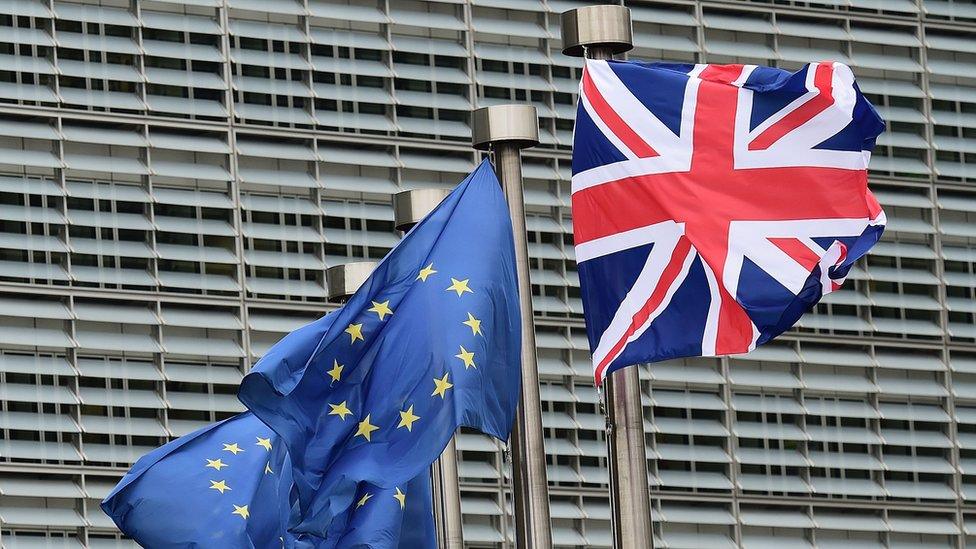
- Published16 September 2019
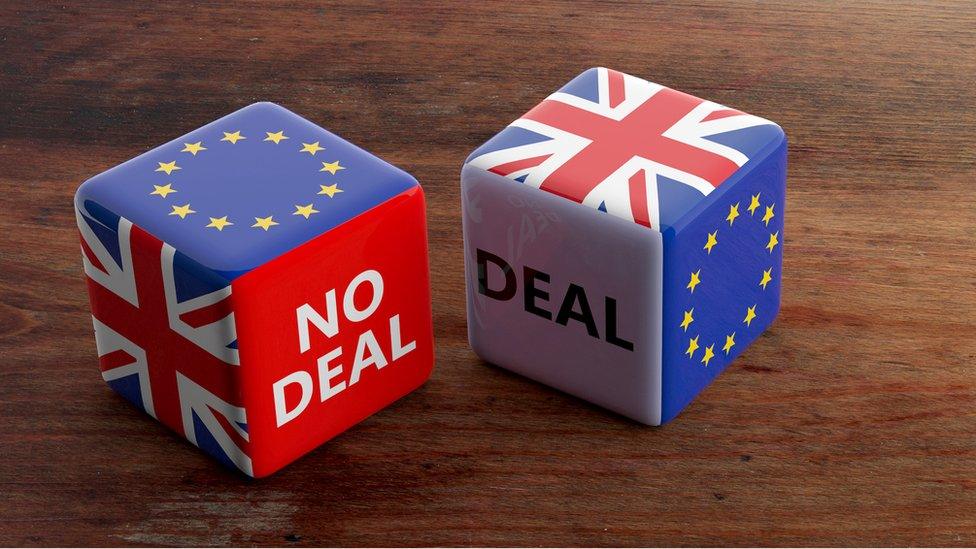
- Published28 November 2018
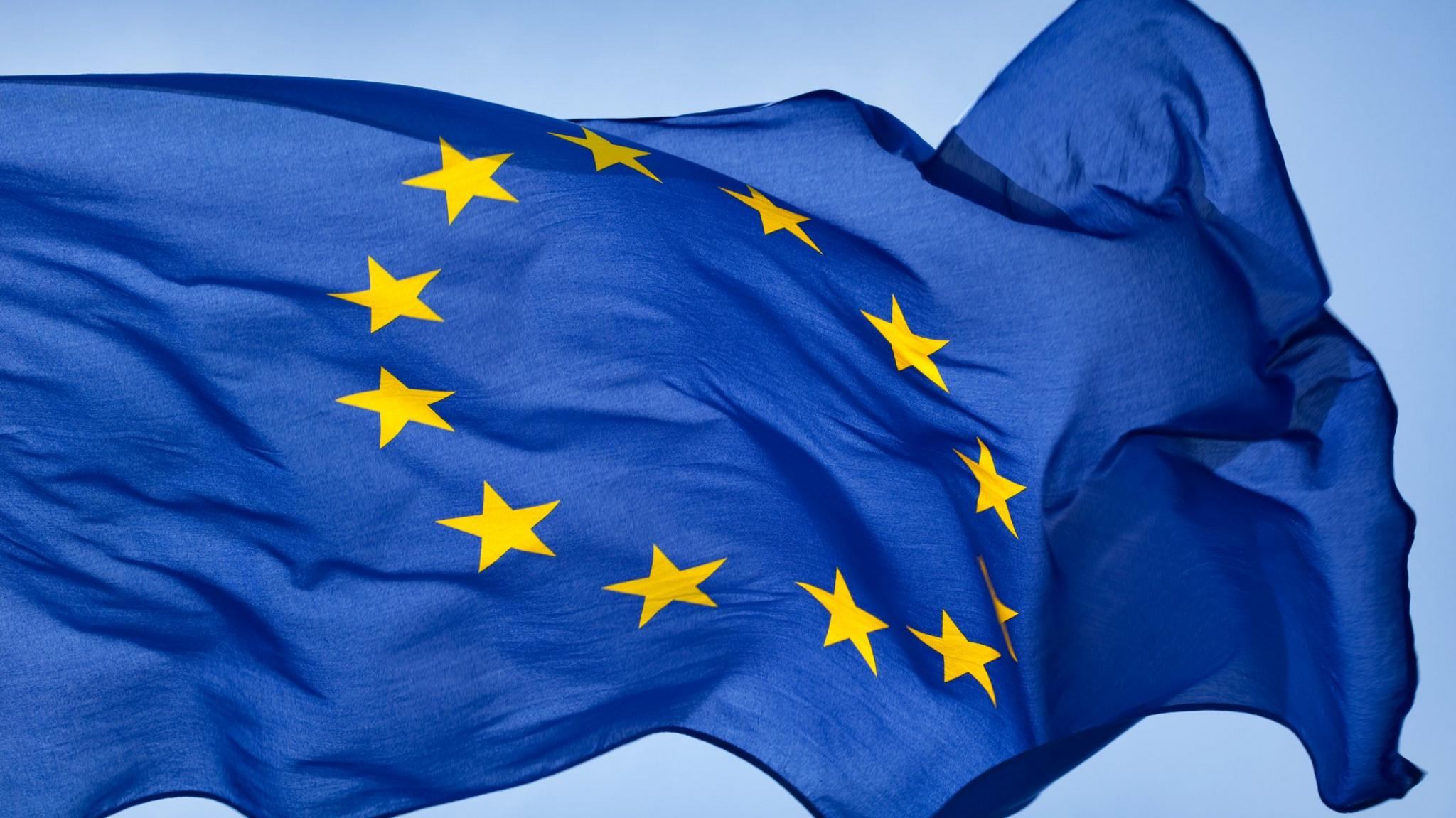
- Published24 June 2016
